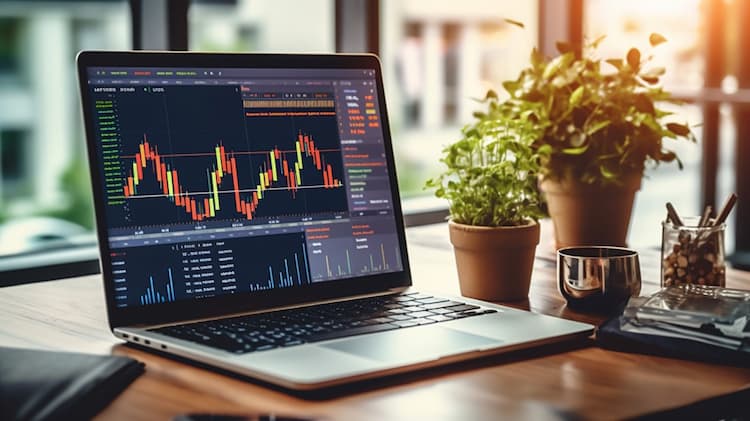
COMG vs GCC: Sectors and Top Holdings
COMG and GCC offer investors distinct avenues to tap into the commodities market, each with its unique investment approach. Read our article.
The WisdomTree Continuous Commodity Index Fund (GCC) is managed by WisdomTree Asset Management, Inc. (the Adviser). GCC is an actively managed exchange-traded fund (ETF) designed to provide broad-based exposure to four commodity sectors: Energy, Agriculture, Industrial Metals, and Precious Metals, primarily through investments in futures contracts. WisdomTree Asset Management employs a unique weighting strategy that considers liquidity, qualitative factors, and market views to achieve diversified exposure to these commodity sectors. Additionally, the fund may allocate up to 5% of its net assets to bitcoin futures contracts traded on the Chicago Mercantile Exchange, providing a unique blend of traditional and digital asset exposure. GCC's investment approach aims to optimize roll benefits in futures markets, ensuring the fund's effectiveness in different market conditions. Please note that the fund does not invest directly in physical commodities.
While the GCC WisdomTree Enhanced Commodity Strategy Fund (GCC) primarily focuses on providing exposure to various commodity sectors through futures contracts, it does not follow a traditional dividend distribution model. Unlike equity-based ETFs, GCC's returns are primarily generated through changes in commodity futures prices, making it ineligible for regular dividend payments. Instead, investors in GCC can potentially benefit from capital appreciation and the potential for returns from commodity price movements, which are influenced by various factors such as supply and demand dynamics, geopolitical events, and market sentiment. Therefore, if you are seeking dividend income, GCC may not be the most suitable investment choice, as its primary objective is to offer exposure to the commodity markets rather than consistent dividend distributions.
The GCC Tracking ETF is actively managed and aims to provide broad-based exposure to four commodity sectors: Energy, Agriculture, Industrial Metals, and Precious Metals through investments in futures contracts. These sectors include various commodities such as Brent Crude Oil, West Texas Intermediate (WTI) Crude Oil, Natural Gas, Precious Metals like Gold and Silver, and many others. The fund's weighting among these commodities is determined based on liquidity and qualitative considerations, aiming to provide diversified exposure to the commodity markets. Additionally, the fund may allocate up to 5% of its net assets in bitcoin futures contracts traded on the Chicago Mercantile Exchange to capture potential gains from the cryptocurrency market. GCC Tracking uses a roll process to maximize yield in backwardated markets and minimize losses in contango markets, ensuring efficient exposure to commodity futures.
The correlation aspect of the WisdomTree Enhanced Commodity Strategy Fund (GCC) is essential for understanding its performance relative to various commodity sectors. GCC aims to provide exposure to Energy, Agriculture, Industrial Metals, and Precious Metals through futures contracts, offering a diversified approach to commodities. The correlations within these sectors can vary, impacting the fund's overall performance. Investors often use GCC's correlation data to assess its suitability for hedging against inflation, diversifying portfolios, or seeking returns in commodity markets.
The GCC Sector ETF is an actively managed exchange-traded fund (ETF) that aims to provide diversified exposure to four commodity sectors: Energy, Agriculture, Industrial Metals, and Precious Metals, primarily through investments in futures contracts. This ETF offers investors the opportunity to participate in the performance of various commodities, including Brent Crude Oil, Natural Gas, Soybeans, Gold, and Silver. The fund's weighting among commodities is determined by liquidity and qualitative considerations, with the goal of achieving broad-based exposure within the specified sectors. Additionally, the GCC Sector ETF may allocate up to 5% of its net assets to bitcoin futures contracts, further enhancing its potential for diversification and returns. Please note that the ETF does not invest directly in physical commodities but rather in futures contracts on these commodities, which are subject to price movements based on the underlying commodity's market performance.
The exposure characteristic of the GCC ETF focuses on providing investors with broad-based exposure to four commodity sectors: Energy, Agriculture, Industrial Metals, and Precious Metals through investments in futures contracts. The ETF aims to capture the performance of commodities such as Brent Crude Oil, West Texas Intermediate (WTI) Crude Oil, Natural Gas, and various agricultural products. The weighting among these commodities takes into consideration liquidity and market views, offering diversified exposure to the commodity markets. For a deeper understanding of the ETF's exposure and to uncover correlations and overlaps, you can use the ETF Insider web app, which provides comprehensive data and visualization tools for US ETFs.

ETF Insider is a data-driven portfolio analytics and optimization platform that introduces a more efficient and practical way to visualize, analyze and optimize portfolios.
Rather than focusing on the surface-level attributes of ETFs and Mutual Funds, ETF Insider goes deeper by examining the underlying holdings of exchange traded products.
By organizing and structuring that data, investors can easily navigate within their overlapping layers.
This innovative perspective combined with modern data visualization and modeling tools, provides an entirely new approach to portfolio optimization that can quickly expose both portfolio inefficiencies and opportunities.

COMG and GCC offer investors distinct avenues to tap into the commodities market, each with its unique investment approach. Read our article.

Compare the USCI and GCC ETFs with our thorough analysis. Dive into the performance metrics, underlying assets, and investment strategies to see how they stack up against each other. Whether you're a seasoned investor or just getting started, our comparison provides valuable insights to guide your investment decisions.

Compare the GCC and CMDY ETFs with our thorough analysis. Dive into the performance metrics, underlying assets, and investment strategies to see how they stack up against each other. Whether you're a seasoned investor or just getting started, our comparison provides valuable insights to guide your investment decisions.
ETF Insider is a novel portfolio optimization tool that uses the power of data visualization to gain insight into portfolio compositions, concentration risks, portfolio efficiency and more. Complex financial data can be transformed into visually appealing and easily digestible graphs and charts, allowing investors to quickly identify trends and make well-informed investment decisions. Not only does this save time, but it also increases the accuracy and effectiveness of portfolio management.